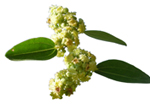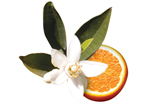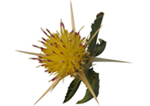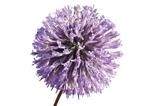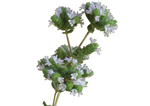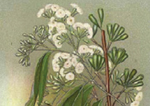This wild bush comes from the Rhamnaceae family. a type of tree or shrub with an edible plum-like fruit/ This tree is very strong and resistant and can be grown anywhere from the southern desert area to the Golan Heights in the north. The source to the botanical name "Zizipus Spina - Christi" comes from the fact that it is believed that the crown worn by Jesus on the cross was made from its branches.
Flowers |
|
The Citrus species are from the Rutaceae family and include the full range of orange, lemon and grapefruit trees. The white, heavily scented flowers appear during the spring. Citrus orchards are spread over the whole of the coastal plain. Honey from these flowers has a very distinctive flavour.
A light purple perennial wild flower, with prickly leaves, from the Compositae family, flowering during the months of April, May, June and July, and is found throughout all of the Holy Land. The botanical name comes from the mythical Greek name for a half horse, half man (Centaur).
A purple/blue perennial wild flower from the Compositae family. Found in the area of the Galilee and Golan. Flowering during the months of June and July.
A perennial small white wild flower from the Labiatae family, flowering throughout the summer from April until September. Grows in all kinds of soil both in the mountains and plains. The stem of the plant is square shaped and hairy giving it a silver hue. It can be used as a herb and also for medicinal purposes.
This native Australian species includes about 700 different varieties which are very tall and come from the Myrtaceae family. The British brought this species to the Holy Land during the time of the Mandate. The name Eucalyptus comes from the Greek word meaning cover, which relates to the formation of the flower. The flowers from the many species of this tree come in various colours and sizes and appear during most of the year throughout the whole of the Holy Land, both in dry and wet conditions. The oil from the leaves is used for medicinal purposes.
|
|||||

